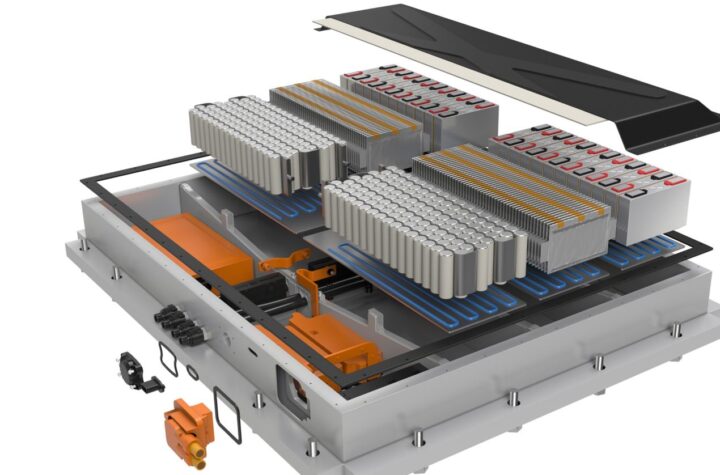

Three technology pillars, along with their services, need to converge in order to provide seamless machine to machine (M2M) communication, according to Telit Wireless Solutions, a global provider of M2M solutions, products and services. Long-range cellular connects devices to each-other and the Internet of Things or IoT. Short-range license free wireless, connecting devices to their peripherals, to each other, and to long-range gateways. And, thirdly, there is position awareness for all connected devices. These are all woven together by services to add the necessary value and functionality to fully connect devices to the systems they integrate.
According to Dominikus Hierl, CMO at Telit, the various automotive market segments collectively represent the largest growth potential for wireless M2M communication in the near future. “About 50 million new cars were sold globally in 2009. Only about 5% were equipped with line-fitted Telematics systems. Juniper Research estimates this number to grow to 90 million connected cars by 2016,” says Hierl. “As a major player in the global M2M market, Telit is regularly approached by carmakers and Tier- 1 automotive system integrators to provide dedicated vertical solutions.
In response to this demand, we have developed a premier portfolio of automotive-grade GPRS, HSPA, HSPA+ and LTE modules designed to serve the specific needs of this booming market”
Automotive Industries (AI) asked Hierl how significant the recent award ISO TS 16949 certification to the company’s network across the globe was.
Hierl: Very significant. It is an essential requirement to play in the automotive space. Achieving ISO/TS 16949 certification is not only a major milestone for Telit but also for the M2M module industry which now becomes a full member of the demanding automotive supply chain. This certification dovetails with another very important measure of long-term stability and quality of our products — the Production Part Approval Process (PPAP). That is a validation test which products have to pass before they can be released for use in the automotive market. The PPAP suite contains a comprehensive set of relevant mechanical and environmental tests specified in ISO 16750 (-1/2/3:2006) and ETSI EN 300 019 (Part 1-1/2/5) designed to guarantee the extremely high quality levels as mandated by the automotive manufacturers. The purpose of this test is to demonstrate the robustness of the product under pre-defined environmental conditions. It has to be shown that the units survive the test suite without irreversible failure and perform according to product specifications. The two work together to ensure full traceability and highest quality in the entire automotive supply chain. Our non-automotive customers also benefit from these certifications which guarantee that everything we do is subject to the strictest rules of quality and process management, including our mobile network, cloud, and application enablement value-added services from Telit’s business unit m2mAIR.
AI: Tell us a little about your R&D center in Trieste, Italy – how effective has it been to centralize your research and development for the global market?
Hierl: Our center in Trieste is Telit’s first and still most densely staffed R&D site. It spearheads most of the research and engineering for our cellular products. It also acts as the coordination hub for the work developed out of our other six R&D facilities in: Cagliari (Italy) – focusing on Short Range Integration between Cellular and GNSS/Short Range; Chicago, Illinois (USA) – North America Mobile Network Services Development; Seoul (Korea) – CDMA, EV-DO, 3G; Tel Aviv (Israel) – 4G, SIM Card-based m2mAIR global module management services; Foothill Ranch, California (USA) – GNSS, Cognitive Positioning; and Boca Raton, Florida (USA) – PaaS, Cloud, Application Enablement Services. This completely global distribution of R&D centers is designed to leverage local talent and excellence. We plan to maintain and build up this global structure responding to opportunities and demand.
AI: What are some of Telit’s products that are found in the automotive market?
Hierl: The GE864-QUAD Automotive V2 is the second generation of this very accomplished automotive module. It is certified to the ISO 16750-1:2003 specification for road vehicles – Environmental conditions and testing for electrical and electronic equipment according to parts [1] ISO 16750-1:2003, Part 1: General; [2] ISO 16750-3:2003, Part 3: Mechanical loads and [3] ISO 16750-4:2003, Part 4: Climatic loads. The new LTE LE920 AUTO and HSPA+ HE920 AUTO modules are packaged in Telit’s new ruggedized 198-pad LGA form factor designed specifically for the automotive industry. This new form factor boasts very high vibration resistance and class-leading heat dissipation which are extremely important for sustained high speed data operation in the hot environments of in-vehicle electronics. We are also introducing automotive grade members of our flagship module family, the xE910. The UE 910-EU AUTO and GE 910-QUAD AUTO are brand new modules in the xE910 compact 28.2×28.2×2.2mm form factor. All Telit automotive products are tested and fully compliant with VDA 1.6 for car hands-free terminals, a specification developed by VDA, the German car manufacturers association, to ensure that all components used in car phones work in a manner to provide optimal performance in terms of noise reduction and echo cancelation.
AI: What has Telit’s role been in the eCall committee?
Hierl: Telit has been part of the eSafety eCall steering committee since 2005. This committee was the one which drafted a memorandum of understanding for the implementation of interoperable in-vehicle eCall.
AI: Give us an idea of the role your products play in the eCall initiative.
Hierl: All of our automotive grade products are compliant with the In-band Modem specification according to ETSI eCall. What that means to automotive OEMs and integrators is a shortcut to full compliance to eCall with the use of any of our automotive products.
AI: How do you see the M2M technologies growing in the automotive segment?
Hierl: The US remains the leader in non-regulated line-fitted solutions. In mid-2013. GM OnStar was the world’s largest OEM telematics service. It is used by the company in North America and China, and has 6.2 million subscribers. An international assessment of 12 car OEMs on Safety and Security Telematics published in September 2013 by ABI Research placed GM’s OnStar in first place, followed by Ford in second and Toyota in third. European efforts in auto OEM telematics tend to lag because of the multiple languages and fragmented regulatory climate – The ABI assessment echoes this diagnosis. That should disappear with eCall, however. Upcoming legislation like the eCall mandate in Europe, resolution 245 of the Brazilian government, and local initiatives in emerging markets such as China will add momentum to the potential of these regional markets. We believe that going forward, the majority of new cars will be equipped with some type of wireless connectivity
AI: How does your strategy in the US differ from that in other markets and why?
Hierl: The U.S. is different in a number of ways. It is very large in absolute numbers and penetration. The mobile communications landscape is dominated by four large mobile network operators (MNO) and a single language, which is different from Europe’s highly fragmented MNO market with high regulatory and language differences needing to be addressed. According to ABI, its assessment leaders, GM, Ford, BMW, and Toyota were characterized by high market share and innovative approaches. With two out of the four being US car companies, it is clear the approach in the U.S. has to be different to – but essentially with similar priority – as the approach in Europe and Asia.










More Stories
The Advantages of Cloud-Based Fax Software for Businesses
40 YEARS OF SILICONE GROWTH IN AMERICA
DuPont materials science advances next generation of EV batteries at The Battery Show